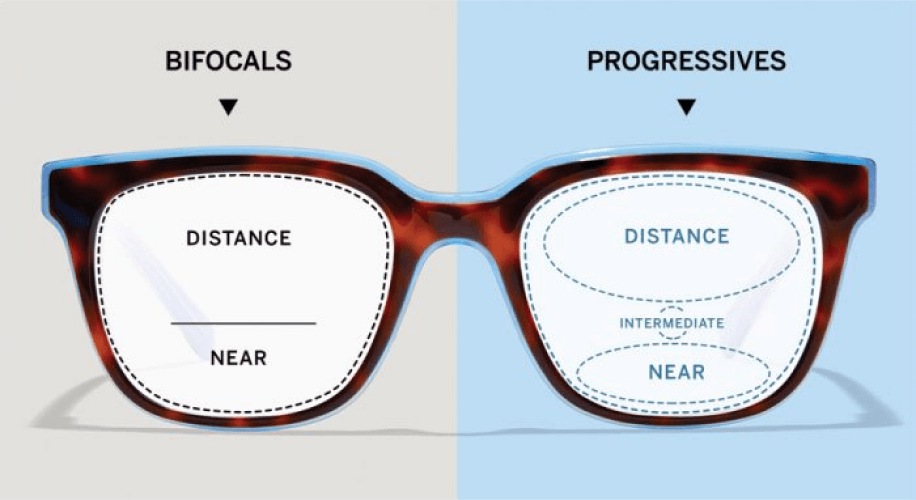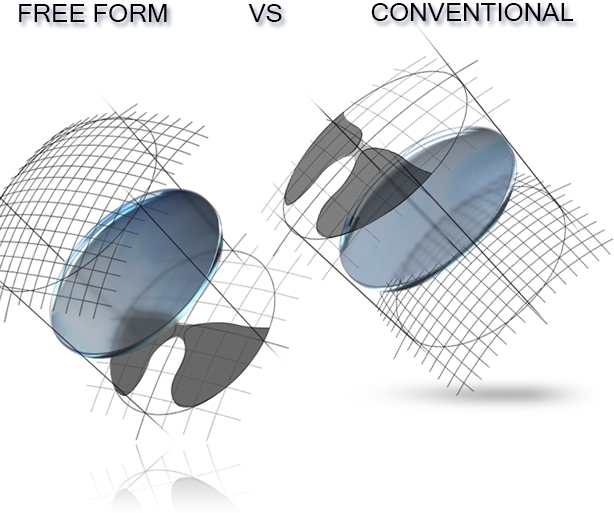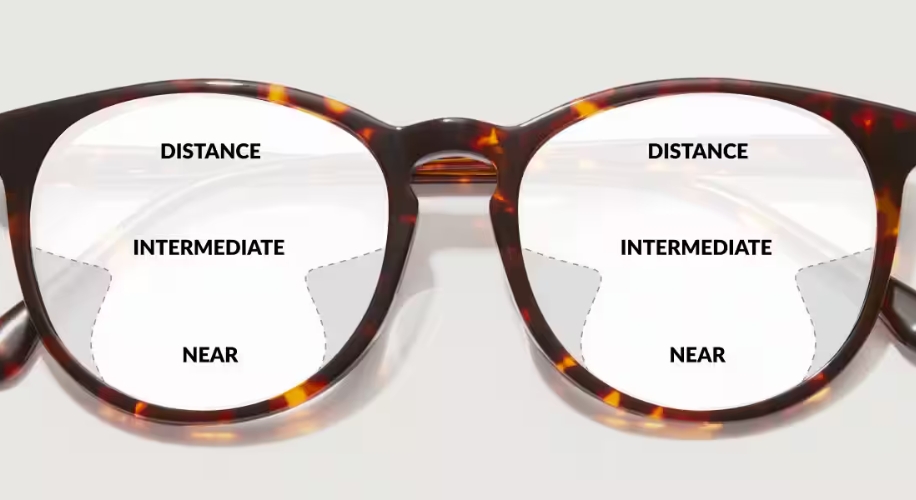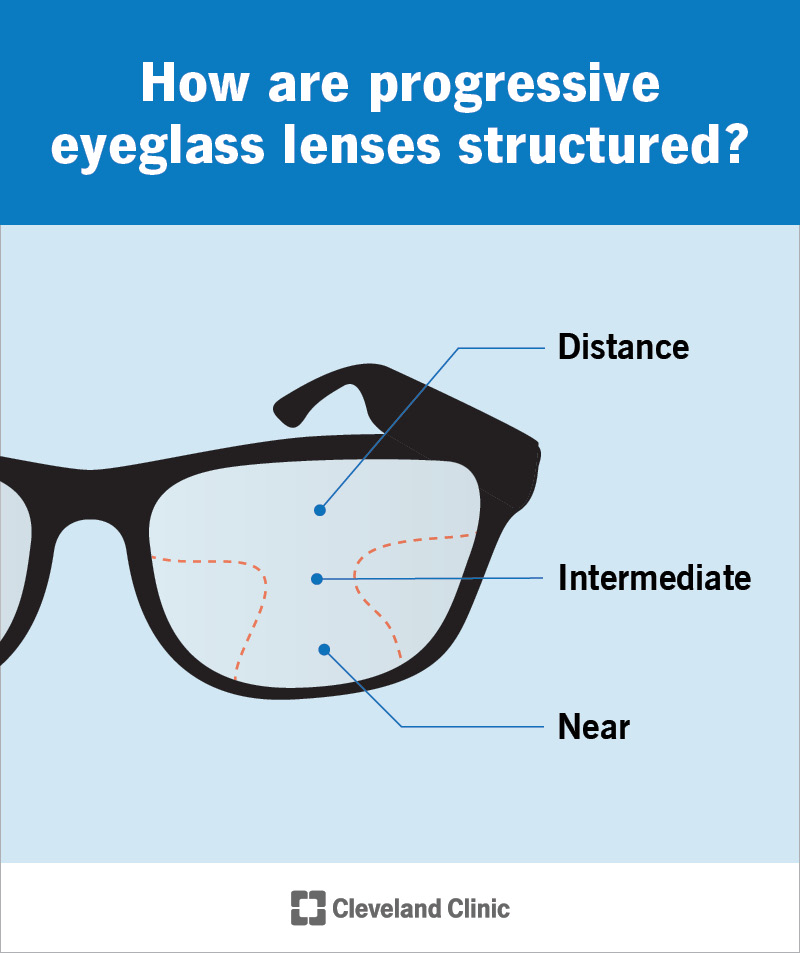Unlock Clear Vision: The Ultimate Guide to Good Progressive Lenses
Struggling to read fine print and tired of switching glasses for different distances? You're likely experiencing presbyopia, a common age-related vision change. The ultimate solution is a single pair of high-quality multifocal lenses. This guide will demystify how they work, but if you're ready to see the difference, exploring a curated selection of good progressive lenses is the first step toward reclaiming seamless, clear vision for every part of your life.
【What Are Progressive Lenses and How Do They Work?】
Have you ever wondered what exactly progressive lenses are and why so many people need them as they get older? If you're finding it harder to read fine print, you're not alone. Let's break down the science behind these innovative lenses and how they provide clear vision at all distances.
Understanding Presbyopia: The Reason You Need Progressives
The need for multifocal lenses often begins with a common, age-related vision condition. Understanding this condition is the first step toward finding the right vision correction.
The Natural Aging Process of Your Eyes
As we age, our bodies change, and our eyes are no exception. For most adults, noticeable vision shifts begin after the age of 40. You might find yourself holding books, menus, or your phone further away just to see them clearly.
This condition is called presbyopia, and it's a natural hardening of the lens inside your eye, which makes it difficult to focus on close-up objects. It’s an incredibly common part of aging; in fact, updated 2025 data shows that over 92% of Medicare beneficiaries aged 65 and older report using glasses, with presbyopia being a primary cause.
The Magic of No-Line Lenses: Progressive Technology Explained
Unlike old-fashioned bifocals with their tell-tale lines, good progressive lenses offer a modern and seamless solution. They are the peak of multifocal lens technology, designed for a smooth and natural viewing experience.
How do progressive lenses work?
Progressive lenses, often abbreviated as PAL (progressive additional lens) on a prescription, feature a gradual and seamless transition in lens power. The top portion of the lens is set for your distance vision, and it slowly increases in power as you look down, reaching its full reading strength at the bottom.
This "no-line" design means you don't experience the distracting "image jump" associated with traditional bifocals. The result is clear vision whether you're driving, working on a computer, or reading a book, all with a single pair of glasses.
Decoding Your Eyeglass Prescription for Progressives
To get the best possible vision from your progressive lenses, understanding your prescription is key. Several specific measurements ensure your lenses are perfectly tailored to your eyes.
Key Measurements for Your Lenses
Your eyeglass prescription contains crucial information that your optician uses to craft your lenses. For progressives, these values are especially important:
- "Add" Power: This number, typically preceded by "ADD," indicates the additional magnifying power you need for reading and other near tasks. It's the core component that corrects for presbyopia.
- Sphere (SPH): This is the main power of your lens to correct for nearsightedness or farsightedness. The "Add" value is combined with the SPH value to create the reading portion of the lens.
- Cylinder (CYL) & Axis: If you have astigmatism (an irregularly shaped cornea), these values correct the blurriness it causes. They ensure your vision is sharp at all distances.
- Pupillary Distance (PD): This is the distance between the centers of your pupils. An accurate PD is absolutely critical for progressive lenses, as it ensures the optical center of the lens is perfectly aligned with your eye for comfortable adaptation and clear vision.
Now that you understand what goes into a prescription for progressives, the next step is to find a pair that precisely matches these needs. Exploring a diverse range of lens materials and coatings allows you to tailor your glasses for optimal comfort and clarity. To see how these prescription details apply to actual eyewear, browse through a variety of high-quality progressive lens options to find the perfect fit for your vision and lifestyle.
【Progressive Lenses vs. Bifocals: A Head-to-Head Comparison】

Once you have your prescription, the next big decision is choosing the type of multifocal lens that best suits your lifestyle. The two most common options are traditional bifocals and modern progressive lenses. While both aim to correct presbyopia, they do so in vastly different ways.
Functionality and Aesthetics: The Core Differences
The Visual Divide
Bifocal lenses are easy to spot. They feature a distinct, visible line that horizontally bisects the lens. This line creates a sharp separation between two different prescriptions: the top part for distance vision and the lower segment for near vision, like reading.
Good progressive lenses, on the other hand, have no such line. They feature a smooth, gradient transition in power from the top of the lens to the bottom. This seamless design not only looks more modern but also allows for a more natural progression between viewing distances.
No-Line Bifocals vs. Progressives: Weighing the Pros and Cons
Choosing between these lens types involves balancing aesthetics, visual comfort, and functionality. Each has its own set of advantages and disadvantages that can influence your decision.
Weighing Your Options
Let's break down the key points for each type of lens to help you determine the best fit for your needs.
- Progressive Pros: The most significant advantages are the cosmetically clean, no-line appearance and the absence of a jarring "image jump" when your gaze shifts from far to near. Critically, they also provide a third, intermediate viewing zone, which is perfect for computer work.
- Progressive Cons: The main drawback can be an initial adaptation period. Some wearers experience peripheral distortion, often described as a "swim" effect. This can lead to problems with progressive lenses if they are not fitted correctly. The corridor for near vision can also be narrower than in bifocals.
- Bifocal Pros: Bifocals typically offer a wider, more distinct field of view for both distance and near tasks, which some people prefer. They also tend to be a more budget-friendly option.
- Bifocal Cons: The "image jump" can be disorienting and take getting used to. The most significant functional downside is the lack of an intermediate correction zone, making them less ideal for computer users. Furthermore, the visible line is often considered cosmetically unappealing and a tell-tale sign of "older" glasses.
Ultimately, the choice depends on your priorities. However, many of the initial challenges with progressives can be minimized by selecting a high-quality lens. To understand what makes a superior lens and avoid common adaptation issues, it's helpful to see the latest designs available. Explore a curated selection of the best progressive lenses of 2025 and find a pair that offers the seamless vision and modern look you desire.
【Exploring Advanced Progressive Lens Technology】

Not all progressive lenses are created equal. As technology has evolved, so has the quality and performance of these sophisticated lenses. Understanding the key differences between standard and premium options, as well as the latest innovations, will empower you to choose the very best for your vision.
Premium vs. Standard Progressive Lenses: Is the Extra Cost Justified?
You've likely noticed a wide price range for progressive lenses and wondered, are the more expensive ones genuinely better? The answer generally lies in the technology used to create the lens, which directly impacts your visual experience.
Standard progressive lenses are a functional, entry-level option. However, they often come with compromises, such as narrower viewing corridors for reading and more noticeable peripheral distortion. This can make the adaptation period more challenging.
Premium lenses, in contrast, are built using advanced, often patented, technologies. These designs focus on creating wider, more stable visual fields and significantly reducing the unwanted "sway" or "swim" effect. As lens manufacturer Hoya states, its Hoyalux iD MySelf is "the most premium progressive lens available from the company," highlighting the commitment to superior performance in this category. To determine if the upgrade is right for you, it's beneficial to compare the features and reviews of high-end options. Explore a curated collection of lenses designed for superior visual comfort to see how premium technology can enhance your daily vision.
What Are Digital "Free-Form" Progressive Lenses?
The Pinnacle of Personalization
The most significant leap forward in lens manufacturing is digital surfacing, also known as free-form technology. This isn't just a coating or a material; it's a revolutionary process that allows labs to craft lenses with unprecedented precision.
Instead of using pre-molded lens blanks, free-form technology carves the prescription directly onto the lens surface point-by-point. This allows for the creation of highly customized lenses that can be tailored to your exact prescription, your chosen frame, and even your lifestyle needs. For instance, DSW Optical's Camber Individual lens utilizes Digital Ray-Path 2 technology, which optimizes an incredible 99% of gaze directions, a massive improvement over the less than 15% optimized in older generations. This high-definition approach results in sharper vision and a wider field of view. To see how this advanced manufacturing translates into a better visual experience, you can browse a selection of truly personalized progressive lenses that are custom-made for the wearer's unique needs.
Innovations That Reduce Peripheral Distortion
Cutting-Edge Lens Design
A primary concern for new progressive wearers is peripheral distortion. Leading lens makers have developed groundbreaking technologies specifically to address and minimize this issue, making the adaptation process smoother and the visual experience more stable.
Several cutting-edge designs from 2025 are leading the way:
- Binocular Harmonization: Developed by Hoya, this technology specifically accounts for differences in prescription between your left and right eyes. By harmonizing the power in both lenses, it significantly reduces swaying effects and eye strain.
- Dual-Surface Design: Optimum RX Group’s Optiform Dual 3 lens combines two distinct lens surfaces. This innovative approach minimizes peripheral aberrations, effectively widening your field of clear vision.
- Biometric Modeling: Rodenstock takes customization to the next level. Their Impression Big Exact lenses are crafted from a precise biometric model of the eye, based on thousands of individual measurements. This results in a lens that is uniquely fitted to your eye’s anatomy, maximizing clarity.
These advancements are transforming what wearers can expect from their glasses. If you've been hesitant to try progressives due to concerns about distortion, it's time to see how modern technology has solved this problem. Take a look at the latest distortion-reducing lenses to find a pair that offers unparalleled visual stability and comfort.
【The Best Progressive Lens Brands and Designs】

With a clear understanding of the technology, how do you choose from the top names in the industry? The brand and specific design of your progressive lenses are just as crucial as the underlying technology, as they determine the final fit, comfort, and visual clarity you experience every day.
Top-Tier Brands: Essilor Varilux and Hoya - Which Offer Good Progressive Lenses?
When it comes to premium progressive lenses, two names consistently lead the market: Hoya and Essilor. Both brands have invested heavily in research and development to push the boundaries of what these sophisticated lenses can do.
Hoya progressive lenses review
Hoya is renowned for its user-centric innovations. Their flagship Hoyalux iD MySelf lens incorporates AdaptEase technology, which is specifically designed to create wider visual fields and make the adaptation period smoother for new and experienced wearers alike.
Crucially, this design features an optimized intermediate field of view. This makes it one of the `best progressive lenses for computer users` in 2025, providing exceptional comfort and clarity when looking at digital screens.
Essilor Varilux Lenses
Essilor's Varilux line is synonymous with personalization. Their latest Varilux XR series moves beyond a standard prescription by analyzing the wearer's unique visual behavior, including their dominant eye and how they use their near vision.
This detailed analysis allows for the repositioning and enlargement of the reading zone, creating a more intuitive and responsive lens. The result is a more natural visual experience that feels tailored to you. To truly understand which premium brand aligns with your visual demands, it helps to compare their top offerings side-by-side. Explore a collection of the market's leading progressive lens brands to find the perfect technology for your eyes.
Choosing the Right Progressive Lens Design for Your Needs
Beyond the brand, the specific lens *design* is paramount. The best lens for a first-time wearer in a large frame is very different from the ideal lens for an experienced user with a complex prescription and small, fashionable frames.
Finding Your Perfect Match: A Design Guide
Matching the lens design to your individual circumstances is the key to success. Here are some top designs for common scenarios:
- For First-Time Wearers: Transitioning to varifocals can be challenging. A design like Tokai's Neuro Select Daily is engineered with a gentle power progression, making it an excellent choice for those new to progressive lenses.
- For Smaller Frames: Love those trendy, smaller frames? You need a lens with a short corridor. Younger Optics' Image progressive lens is specifically designed to fit into smaller frame heights without compromising the size of the reading area.
- For Complex Prescriptions: If you have a high or complex prescription, a custom-designed lens is essential. Options like Optimum's Optiform Dual 3 are tailored to your exact prescription strength and frame dimensions, maximizing visual performance and clarity.
Finding the right design is key to your satisfaction. If you wear small frames or are new to multi-focal lenses, you need a lens designed for your specific situation. Browse a variety of specialized progressive lens designs to discover the one that matches your lifestyle and eyewear preferences.
Solutions for Special Vision Needs
Do you have other vision challenges besides presbyopia? Modern progressive lenses can often integrate multiple corrections into a single, seamless lens, offering comprehensive solutions for a variety of needs.
Can You Get Progressive Lenses for Astigmatism?
Absolutely. This is a common and straightforward request. Progressive lenses can fully correct for astigmatism. During the manufacturing process, the Cylinder (CYL) and Axis values from your eyeglass prescription are incorporated directly into the lens design, ensuring you receive clear vision at all distances.
What Are Photochromic Progressive Lenses?
These lenses offer a powerful two-in-one solution. They combine the multi-focal correction of a progressive lens with photochromic (light-adaptive) technology, famously associated with the brand name Transitions.
These lenses appear clear while indoors but automatically darken when exposed to UV sunlight, acting as sunglasses. It's important to understand the distinction: "progressive" corrects your vision, while "photochromic" adapts to light. You can easily get lenses that do both. If you have astigmatism or want the convenience of photochromic lenses, you don't have to compromise. Advanced lenses can handle it all. To find a pair that addresses all your visual requirements in one, check out these multifunctional progressive lenses that offer comprehensive vision solutions.
【Buying Guide: Navigating Cost and Adaptation】

Making the final purchase decision involves more than just picking a brand. You need to understand the financial investment and prepare for the initial adjustment period. A smart buying strategy ensures you get the best value and a comfortable visual experience.
The Real Cost of Progressive Lenses
What should you realistically expect to pay for a quality pair of progressive lenses? The final price tag is a sum of several parts, making it highly variable.
Budgeting for Better Vision
The ultimate `cost of progressive lenses` is determined by a combination of the brand prestige, the sophistication of the lens technology, any additional coatings (like anti-glare or scratch-resistance), and the retailer you choose. While you might find frames online for as little as $6, the lenses themselves are the major investment. For instance, a retailer like Liingo prices its entry-level progressive lenses starting at $179.
Opticians generally recommend updating your glasses every one to three years. However, you should consider a change sooner if you begin experiencing symptoms like blurred vision, persistent eye strain, or frequent headaches, as these can indicate your prescription needs an update.
In-Person Fitting vs. Online Retailers: A Critical Choice
With so many online options, it's tempting to order from home. However, where you buy your glasses can be as critical as what you buy, especially for multi-focal prescriptions.
Where Should You Buy Your Glasses?
For complex prescriptions like progressives, an in-person fitting with a qualified optician is highly recommended. The precise measurements required are crucial for the lenses to function correctly.
As optometrist Dr. Thomas Krainz advises, "I recommend bifocal, progressive, and trifocal prescriptions to be filled in-person as they require an optician to make measurements catered to your face." While online retailers offer convenience, they can't replicate the expertise of a professional who measures your pupillary distance (PD) and, most importantly, the fitting height for the progressive corridor. These measurements ensure your eyes align perfectly with the different zones of the lens.
Adapting to New Progressive Lenses
Once you have your new glasses, your brain and eyes need time to adjust. This is a completely normal part of the process.
Tips for a Smooth Transition
Expect an adjustment period of a few days to a couple of weeks. It’s common to initially notice a "swaying" or "swimming" sensation in your peripheral vision as your brain learns to process the new visual input.
To speed up the adaptation, try these tips:
- Point with your nose: Instead of just shifting your eyes, turn your head to point your nose directly at what you want to see clearly. This aligns your eyes with the clearest part of the lens.
- Find the "sweet spot": Practice moving your head up and down to look through the different zones. Look through the top for distance, the middle for intermediate tasks like computer use, and the bottom for reading.
- Be consistent: Wear your new glasses as much as possible, especially during the first week. Constant use is the fastest way to help your brain adapt and make the new viewing experience feel natural.
Understanding the costs and committing to a proper fitting are the first steps to success. By knowing what to expect during the adaptation phase, you can transition smoothly into life with clearer, more comfortable vision. To balance cost and performance, it helps to see what advanced options are available. Explore a selection of good progressive lenses to find a pair that fits your budget and meets your visual needs.
Your Guide to Achieving Clear Vision with Progressive Lenses
Choosing the right progressive lenses is a significant step toward achieving effortless, clear vision at every distance. This guide has walked you through the essentials, from understanding the science behind presbyopia to navigating the latest in lens technology. Key takeaways include:
- Seamless Vision: Unlike bifocals with their distracting lines, good progressive lenses offer a smooth, gradient transition between distance, intermediate, and near vision zones.
- Technology Matters: Premium, free-form digital lenses from top brands like Hoya and Essilor offer wider fields of view and significantly reduce the peripheral distortion common in standard lenses.
- Personalization is Paramount: The best lens is one tailored to you. Consider specialized designs for small frames, first-time wearers, or complex prescriptions to ensure optimal performance.
- Professional Fitting is Non-Negotiable: Accurate measurements, particularly pupillary distance (PD) and fitting height, are critical for your eyes to align correctly with the lens corridors. An in-person fitting with a qualified optician is the surest path to success.
- Adaptation is Key: A brief adjustment period is normal. Consistently wearing your new glasses and practicing techniques like pointing your nose at objects will help your brain adapt quickly.
By investing in high-quality technology and ensuring a professional fit, you can overcome the challenges of presbyopia and enjoy a modern, comfortable, and visually seamless experience. You are now equipped with the knowledge to make an informed decision and find the perfect pair of progressive lenses for your lifestyle.
``` MjAyNTA3MjYxODM4Mzc 当前显示MjAyNTA3MjYxODM4Mzc。
Comments
Post a Comment